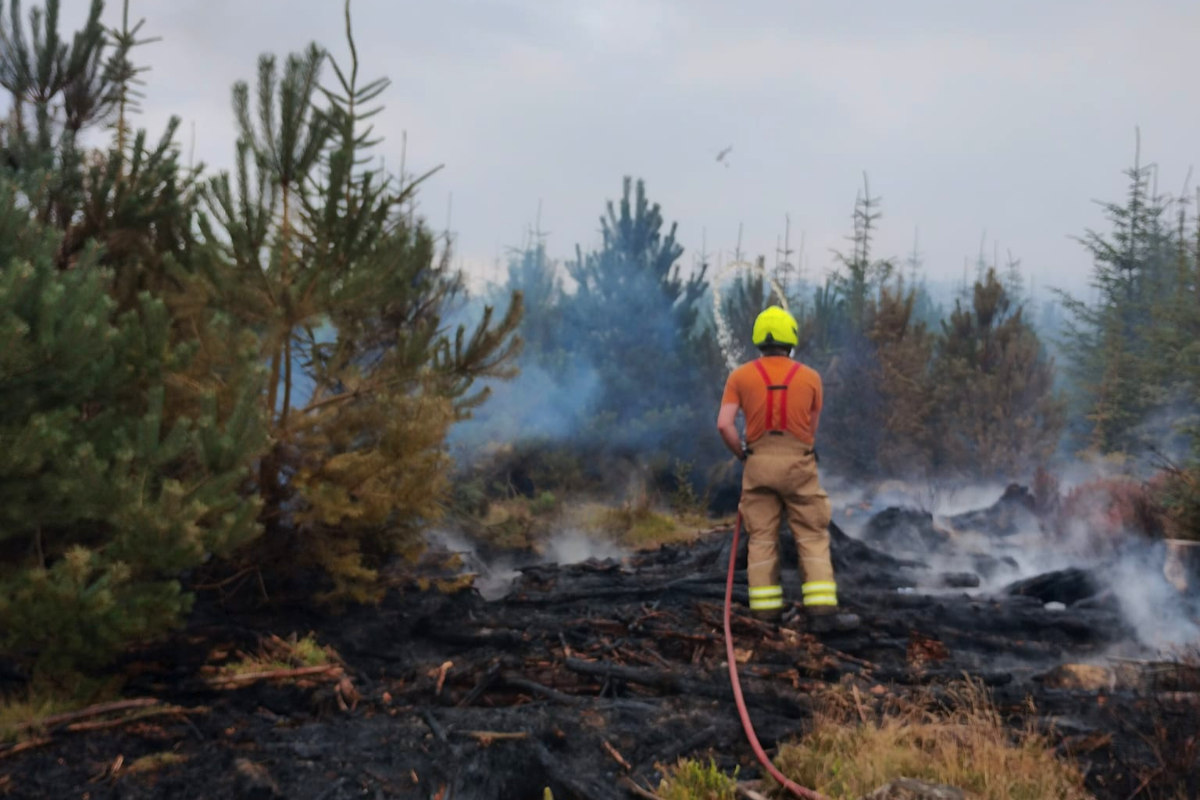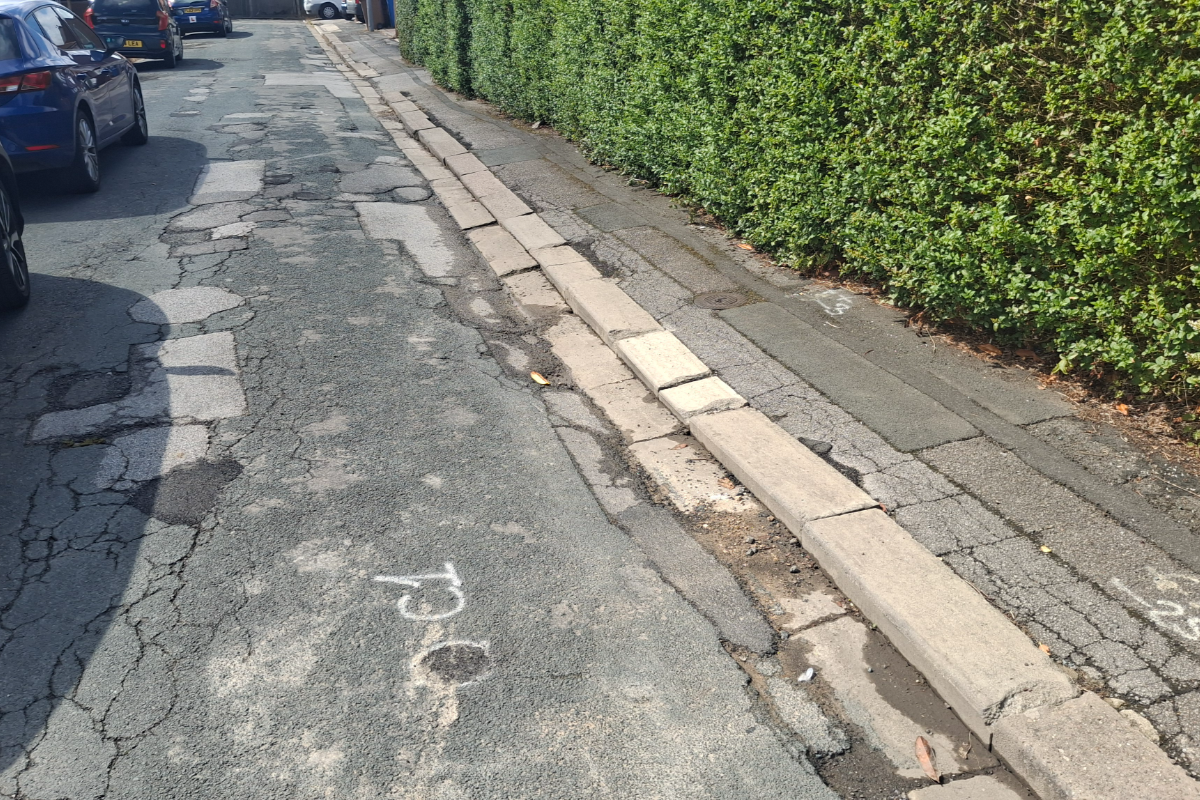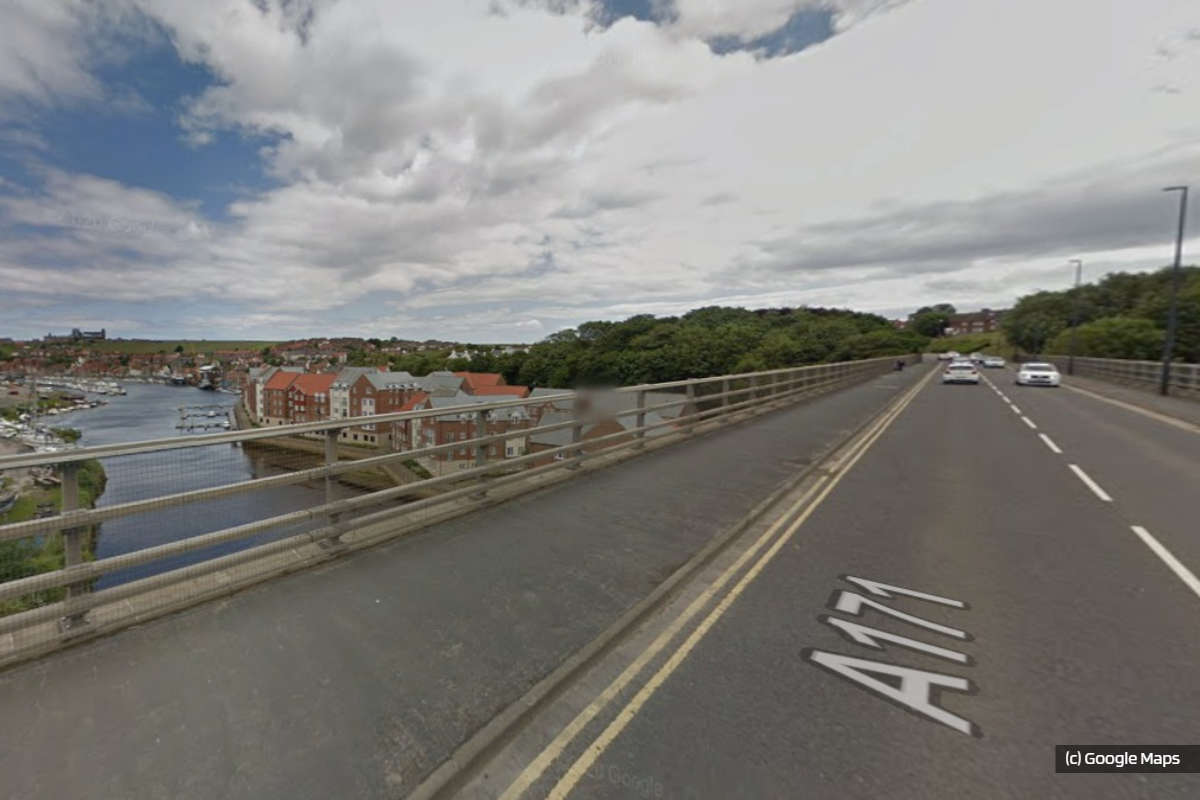
Firefighters are continuing to tackle two blazes on the North York Moors with the help of local farmers.
The first fire on Langdale Moor broke out on Monday evening and resulted in the fire service declaring a major Incident on Wednesday as the blaze spread across moorland near RAF Fylingdales.
A second blaze closed the A171 last night near the Flask Inn. The road has now reopened.
Fire engines from neighbouring areas have been bought in to help tackle the blazes along with a helicopter.
Ben Illsley from the fire service says that local farmers have also been helping to build fire breaks.
In instance of this nature, the most effective way of dealing with fires this nature is being able to dig tracks, but also put things like slurry onto the ground now.
So we've had farmers volunteer to attend the scene and offer use of their machinery and their operations. So within safe scenes of operations, we've utilized that support moving forward. So predominantly around supporting, with kind of trench digging and with allowing us to put slurry and dampening down and making use of their water as well.
The initial blaze broke out on Langdale Moor on Monday evening, at it's peak on Wednesday there were 19 appliances tackling the blaze, that number has now been reduced, but the fire service says that while the surface blaze is mostly contained, the peat below the surface is making the situation challenging.
"So obviously the Heather on the Moorland, we do get fire spread on the surface, that's mostly contained now with the level of water and operations and crews we have on there.
It's more the fact that the heat that kind of radiates underground with the peats. There's a lot of energy stored energy underground there, so it is predominantly into the peat now, which does make it challenging to see where the fire's spreading to one occasions.
We do have a drone up there with heat technology as well, so we can see thanks to our partner agencies as well. So yeah, it's predominantly in the peat now."
Ben Illsley says the use of farmers ploughs has helped to create fire breaks on the moorland.
"Where we have Ploughed some areas alongside the Forest Commission and other partners, It has been effective.
So within a depth of what a, a standard plough can dig down to, it has been effective.
It's very difficult to ascertain from the perimeter where we are now, exactly how deep that peatland is, but you'll tell anybody who's been a local area is generating masses of smoke in that area.
So it is significant and substantial. Where we have had a perimeter road and fire brake supplied, it has been effective."
Residents close to the fires are being advised to keep doors and windows closed to avoid breathing in the smoke.
No evacuations have been required so far but some local residents are concerned.
"We're down at the bottom of the moor. At the moment we're safe. But it does worry us, yes. 'cause in 2003 when it happened last time, my in-laws lived in the house then and, um, they were evacuated.
So, yes. we're thinking about moving our vehicles and moving, moving out. Possibly "
Crews remain at the scene and are likely to be there for the next few days.
Crews are operating on the perimeter to tackle the fire and are being supported by neighbouring services and a helicopter which is assisting with dropping water.
North Yorkshire's Local Resilience Forum has the following advice for people living in homes affected by smoke from the fires.
"Advice on sheltering in smoke-affected areas during hot conditions
You should:
- avoid areas affected by smoke
- draw curtains to limit direct sunlight heating-up internal surfaces
- use fans to recirculate air within the house to help keep cool
- take a break from the heat by moving to a cooler part of the house (especially for sleeping)
- wear lighter clothing
- keep hydrated with cool drinks
- check that central heating, lights and electrical equipment not in use are turned off
- set any air conditioning (preferably fitted with a HEPA filter) to recirculate mode
- open windows that are on the opposite side to the plume or smoke when it is safe to do so and when the air feels cooler outside than inside to get air flowing through the home, for example, at night
- once the smoke has moved away, consider opening doors and windows to allow properties to cool down, being mindful of changing conditions and that the smoke could return
- if driving in smoky areas, keep your windows wound up, air vents closed and switch off air conditioning systems to prevent drawing in outside air"




 Filey MP Hits Out At Proposed Tourism Tax
Filey MP Hits Out At Proposed Tourism Tax
 East Riding Finance Chief Presents Improved Budget Picture
East Riding Finance Chief Presents Improved Budget Picture
 Half A Million Award For North Yorkshire To Deliver Bus Pilot
Half A Million Award For North Yorkshire To Deliver Bus Pilot
 Technology Investment Helps North Yorkshire Fire Service Maintain Cover During Langdale Moor Wildfire
Technology Investment Helps North Yorkshire Fire Service Maintain Cover During Langdale Moor Wildfire
 £70,000 Road and Footpath Improvements Get Underway in Bridlington
£70,000 Road and Footpath Improvements Get Underway in Bridlington
 New Safety And Training Boat Arrives For Scarborough Sea Cadets
New Safety And Training Boat Arrives For Scarborough Sea Cadets
 Outstanding Impact from East Riding Council Team
Outstanding Impact from East Riding Council Team
 Dom's Late Finish Is Top Tear As Boro Battle Back
Dom's Late Finish Is Top Tear As Boro Battle Back
 Scarborough and Whitby MP Hails Budget Boost for Households and Businesses
Scarborough and Whitby MP Hails Budget Boost for Households and Businesses
 Festive Event Near Pickering To Focus On 'Mental Elf'
Festive Event Near Pickering To Focus On 'Mental Elf'
 New Speed Limit For Whitby's New Bridge
New Speed Limit For Whitby's New Bridge
 Review For Scarborough Pride Parking Charges
Review For Scarborough Pride Parking Charges








Comments
Add a comment